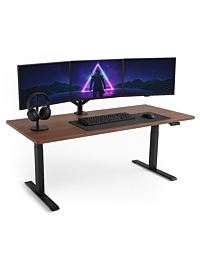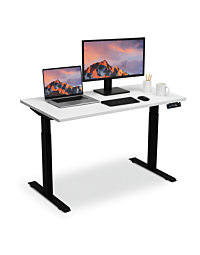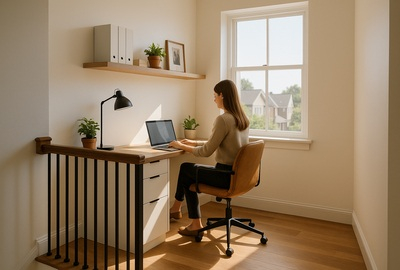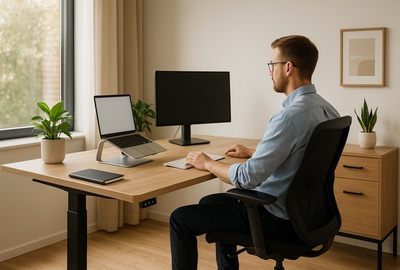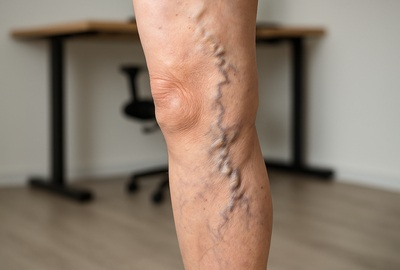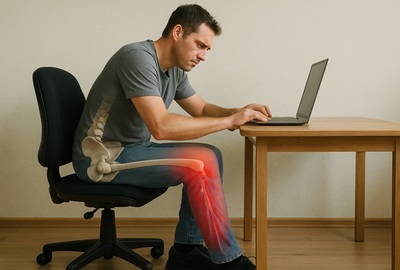Do you spend hours glued to a chair every day, staring at a screen? If so, you might want to rethink your lifestyle—because research is telling us that sitting could be silently shaving years off your life. Yes, you read that right. According to experts like Dr. James Levine, the man who coined the term “sitting is the new smoking,” and Dr. Marc Hamilton, a leading muscle physiology researcher, prolonged sitting or a sedentary lifestyle in general is a direct ticket to health problems you don’t want to deal with later in life.
Here’s what the research says, and more importantly a few simple things you can do to fight back.
The Grim Reality of Sitting Too Long
Let’s cut to the chase. Sitting for long hours does more than just make you stiff and cranky—it’s a silent killer according to Dr. Felipe Lobelo from the American Heart Association. He explains how prolonged sitting:
- Slows down your metabolism: Your body enters energy conservation mode, which is not good news.
- Increases blood glucose levels: This raises your risk of diabetes and other metabolic disorders.
- Elevates blood pressure: A one-way street to heart disease.
- Risks of dementia and alzheimer's disease. More and more research is stating that sedentary lifestyle may increase risk of dementia and alzheimer's disease.
Still not convinced? Here's some statistics
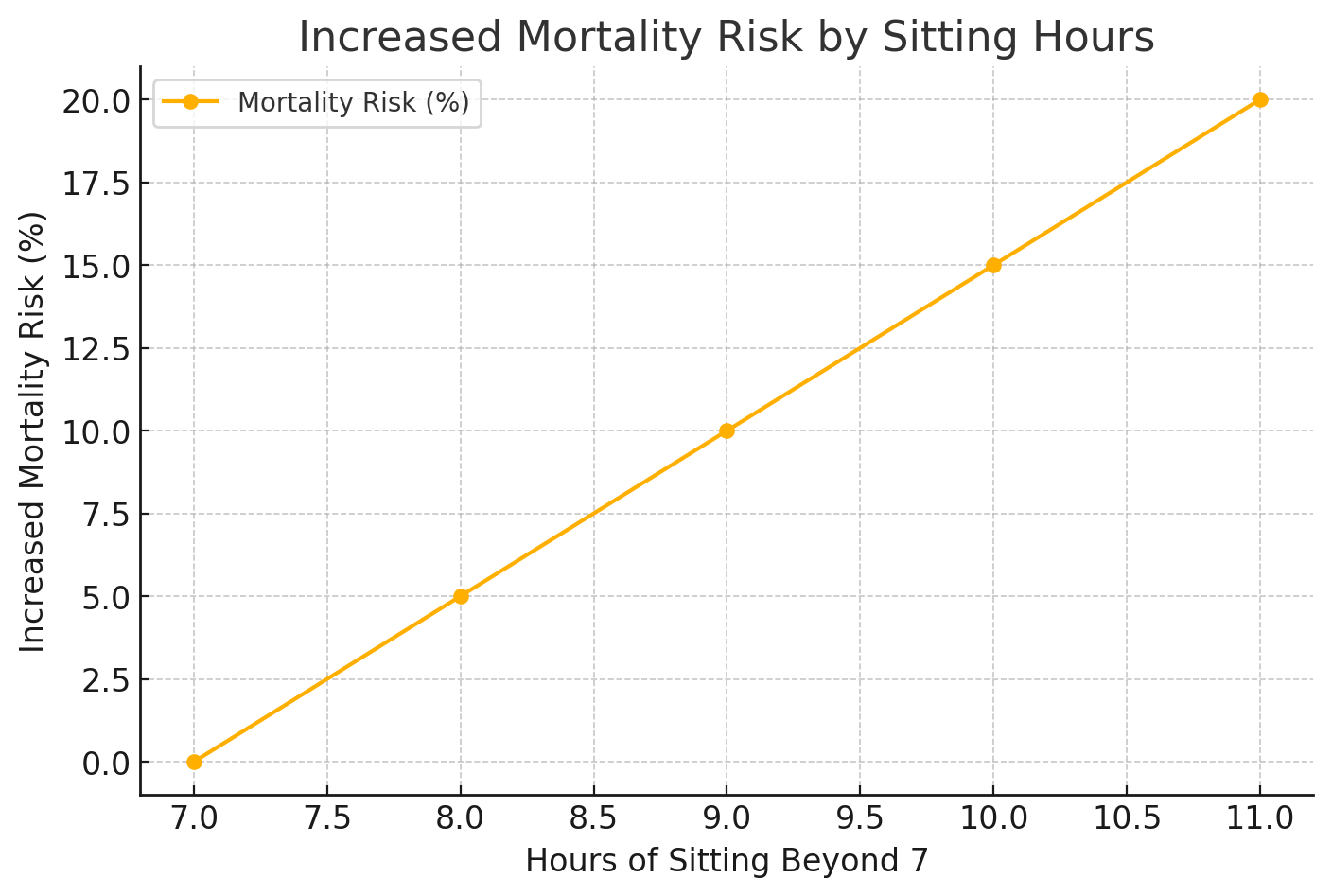
Increased Mortality: A study from the American Journal of Preventive Medicine found that for every additional hour of sitting beyond seven hours, your risk of dying from any cause increases by 5%.
Did You Know: walking for just 30 minutes a day can reduce your risk of all-cause mortality by around 11%, according to a meta-analysis published in the International Journal of Behavioral Nutrition and Physical Activity. Regular movement boosts cardiovascular health, lowers blood glucose levels, and improves overall fitness. Consistent walking also contributes to mental well-being and helps counteract the adverse effects of prolonged sedentary behavior. It's a simple, effective way to extend your lifespan and enhance your quality of life.
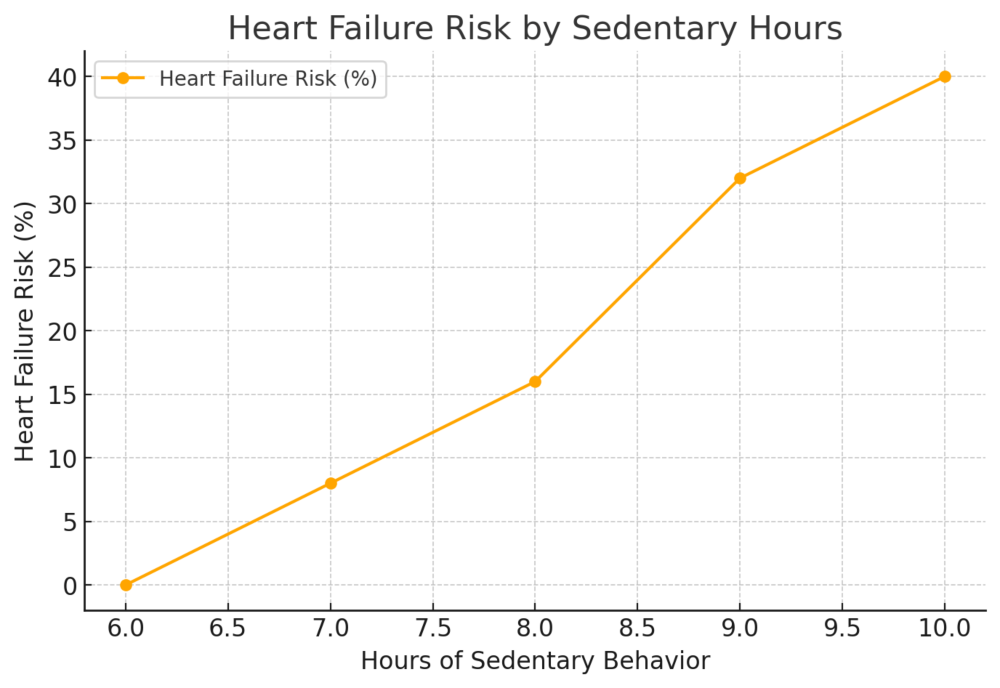
Heart Failure Risk: The Journal of the American College of Cardiology reported that sitting for 10+ hours daily increases the risk of heart failure by a staggering 40%.
Did You Know: Regular moderate physical activity, such as brisk walking, can significantly reduce the risk of heart failure. Research published in the Journal of the American College of Cardiology found that individuals who engaged in at least 150 minutes of moderate aerobic activity per week experienced a 20-25% reduction in heart failure risk. This benefit is attributed to improved heart muscle strength, better blood pressure regulation, and enhanced overall cardiovascular health. The key takeaway: consistency in moderate movement, even in simple forms like walking or cycling, can make a substantial difference in reducing heart failure risk over time.
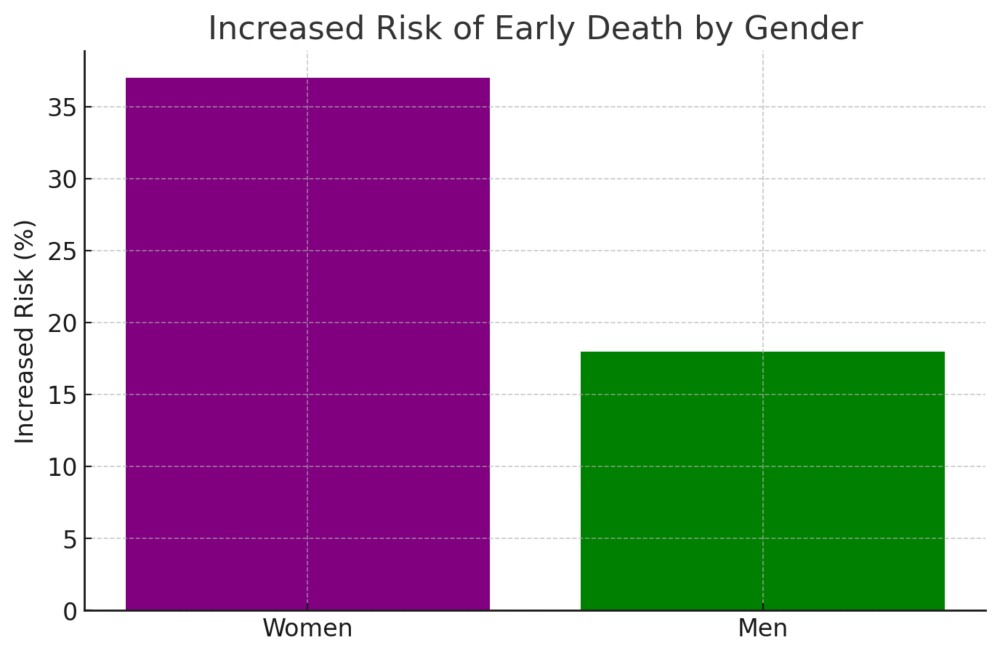
Gender-Specific Risks: According to the American Cancer Society, women who sit for more than six hours daily are 37% more likely to die early.
Men? They face an 18% increased risk. The disparity might be linked to differences in how sedentary behaviour interacts with gender-specific risk factors for conditions like heart disease, diabetes, and certain cancers.
Either way, the takeaway is clear: prolonged sitting spells trouble for everyone. No one is immune to the dangers of a sedentary lifestyle, making it crucial to integrate movement into your daily routine.

Your Brain on Sitting
Think your mind is safe while your body suffers? Think again. The effects of prolonged sitting extend far beyond physical discomfort; they infiltrate your cognitive functions and mental health. Here’s how:
-
Reduced Cerebral Blood Flow: Long periods of sitting slow the circulation of blood to your brain. This can lead to feelings of fogginess, fatigue, and difficulty concentrating.
-
Accelerated Cognitive Decline: Studies have linked sedentary behaviour to faster deterioration of brain functions, making it harder to retain information and think critically over time.
-
Increased Dementia Risk: Alarmingly, sitting for extended periods has been associated with higher risks of developing Alzheimer’s disease and other forms of dementia. This is thought to stem from decreased brain plasticity and reduced neural activity.
But the mental toll doesn’t stop there. Sitting too long can also impact your mood. Being sedentary is linked to higher rates of depression and anxiety, likely because of disrupted hormone regulation and a lack of the mental boost that comes from movement.
Is going to the gym enough?
Sorry but not quite. Going to the gym doesn’t make up for sitting all day - Important: That doesn't mean you should ditch spin class! The gym is a wonderful thing to do weather it's lifting weights or cardio classes. As a work from homer or someone who spends hours at a desk every day getting out and going to the gym is a great way to hit reset and concentrated exercise increases dopamine levels in the brain.
Studies from journals like JACC and PLOS ONE confirm that no amount of exercise can erase the damage caused by excessive sitting. You can’t outrun this—literally.
Meet NEAT: Your Secret Weapon
Enter Non-Exercise Activity Thermogenesis (NEAT). Coined by Dr. Levine, NEAT refers to calories burned during everyday activities like fidgeting, walking, or doing chores. This can add up to 2,000 calories a day if you stay active. Translation: small movements matter—a lot.

Practical And Easy Things You Can Do From Now
-
Get a Standing Desk: No excuses here. Standing desks are affordable and effective. Add a desk treadmill and get your steps in while working? Even better.
-
Use a Step Counter: Get a gadget with a sedentary reminder and aim for 10,000 steps daily. Move every 30-60 minutes. A cheaper Garmin or Polar watch will work just fine. All Apple or Samsung watches have this functionality as well.
-
Move More, Sit Less:
-
Take the stairs instead of the lift.
-
Park further away to force yourself to walk.
-
Conduct walking meetings.
-
Stand during phone calls or stretch during TV breaks.
-
-
Try Soleus Push-ups (SPU): Dr. Marc Hamilton’s simple, seated exercise improves glucose metabolism and burns fat. Learn more about SPUs.
-
Quick At-Home Exercises:
-
Desk stretches for your shoulders and back.
-
Mini squats while waiting for your coffee.
-
Wall push-ups for a quick strength boost.
-
March in place or do seated leg raises to keep your blood flowing.
-
A 20-second plank can work wonders for your core.
-
The Bottom Line: Don’t Just Sit There
The verdict is clear: sitting is bad for us but in this modern age it is unavoidable. The good news is, you can fight back with small, consistent actions. Whether it’s standing desks, quick exercises, or simply parking a bit further away, every little bit helps.
At Deskup, we believe in creating workspaces that keep you moving and thriving. Because your health isn’t just important—it’s everything. So, what are you waiting for? Stand up for your health today!


 Buy Now, Pay Later
Buy Now, Pay Later Verified Rating
Verified Rating 